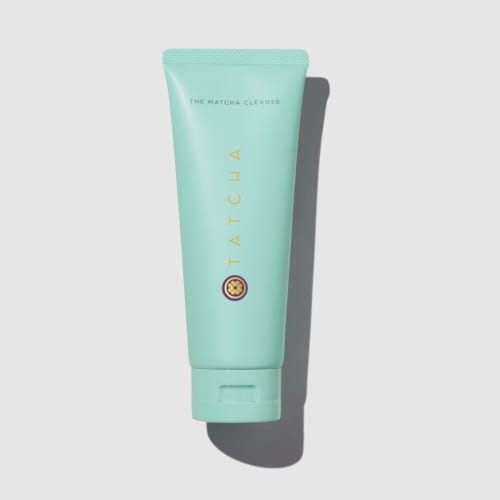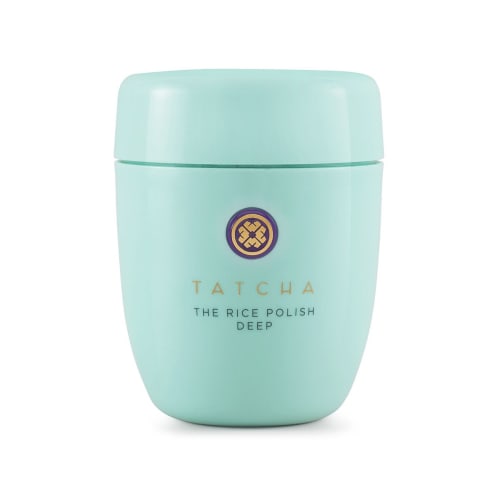Every face has pores, and every face pore needs to be properly cleansed. Keeping pores clear is a good way to keep breakouts and oily skin away. Here are some ingredient and product suggestions for the job.

Each day, our skin gets thicker. Or, rather, it accrues build-up on its surface—certainly made of skin byproducts like sweat and sebum, maybe makeup, probably airborne dirt from the world outside. This is a natural process, and one that necessitates a basic skincare routine, which begins by clearing the day away.
Chemically, a face wash is little different from any other kind of wash. It requires the use of surfactants such as micelles—molecules capable of attracting oil and dirt, pulling it all from the skin so they can be rinsed down the drain. There’s often a visible difference between washed and unwashed skin: the latter can display its buildup conspicuously, in pools of makeup, or less so, in dull patches of dead skin. But the work of a good face cleanser is largely unseen to us. It works on a deeper, microscopic level, by reaching down into pores, where skin’s oil reserves are located. This is why so-called pore purifying cleansers can especially be helpful for managing oily skin types.
Not every cleanser is up to the task of cleansing pores. In general, dermatologists recommend gentle formulas that are able to lift dirt without disruption to the skin's strong but vulnerable barrier. But when a deep clean is necessary, what’s a face to do? They look to pore-purifying cleansers, but only after understanding how—and why—they work
What are pores?
Pores are tiny, and yet they occupy a huge share of the skin care conversation. The term pore refers to one of millions of tiny openings in the epidermis, or the outermost layer of skin, that channel down into the dermis. At the bottom is an oil-secreting sebaceous gland, a term we’ll encounter often when discussing pores. One of the basic functions of a pore is to expel excess materials, like oil, from skin, as well as allow the traffic of substances throughout the skin’s topmost layers.
It’s a truth that should comfort some: Pores are largely invisible, and to inspect them requires significant magnification, or the use of a microscope. But it’s also true that pores can, and will, enlarge with time. And though you may have heard about the promise of pore shrinkage, such a thing is, unfortunately, impossible. Our pores are our own, from birth and onward. The best way to approach your own is to first remember that nobody else thinks about them nearly as much as you do. From there, if you notice pore-related irregularities, it might be a good idea to have your dermatologist take a look. With their guidance, it’s possible to perform gentle pore maintenance at home—with the right tools and techniques.
Can you cleanse inside pores?
Regardless of your skin type, everyone has pores. Pores make skin porous, and that’s a good thing: The better skin can effectively move sebum or sweat up from sebaceous glands and out of the dermis, the better it can self-regulate. But as with any thoroughfare, roadblocks occur; these substances can build up in the pore to the point of clogging. Dermatologists call these comedones, a type of acne, and sort them into two major types: Open comedone, or blackheads, are characterized by an accumulation of dark skin pigment, called melanin. Closed comedones, or whiteheads, occur when a follicle has been completely blocked off. It’s a good idea to talk to a dermatologist when these occur, but regularly and properly cleansing skin can clear out pores, which helps keep comedones at bay.
Women’s Health once compared pores to plastic shopping bags. When they’re empty, they scrunch up, but when they’re full, they expand to accommodate their cargo. Ensuring that they remain empty, or at least keeping their load light, is a matter of keeping skin washed—which itself is a matter of making the right choices.
The best pore-cleansing skincare ingredients
A wide assortment of cleansers await you. But whether you deal with oily skin or just want some extra TLC for your pores, a brief overview of common types of pore-purifying ingredients may help you narrow down your choice.
A fine scrub, like rice powder. The keyword is “fine”, as in: Very gentle. Dermatologists recommend scrubs to refine skin texture and even minimize the appearance of pores, but at the same time caution against overscrubbing. It’s important to choose an exfoliant that works without irritating. The skincare brand Tatcha uses rice bran, which is rich in nourishing minerals and vitamins, and makes an excellent scrub.
A tried-and-true acid, like AHA or BHA. On the other side of the exfoliation spectrum from scrubs are acids, or chemical exfoliants, that chew away the bonds between dead skin cells, and can cut through oil, reaching down into skin to purify pores. Alpha hydroxy acids, or AHAs, also help ingredients applied afterward penetrate deeper into the dermis.
Superpowered plants, like wild rose. Some plant extracts can offer amazing benefits for skin—when they’re applied correctly. One ingredient that Tatcha loves for pores is wild rose, which has a long medicinal history in Asia for everything from headache tinctures to wound healing. In topical skincare, it can even reduce the appearance of pores.
The best pore-purifying cleanser
One of our best recommendations for a daily pore cleanser is The Matcha Cleanse, a new gel formula that lathers into a soft foam to decongest and purify skin. Specially suited towards oily skin types, the lightweight formula is designed to cleanse and balance skin, without stripping away essential moisture. Coix seed, a Japanese superplant, lends its abundant vitamin B and amino acids to nourish the skin while encouraging skin surface turnover. Meanwhile, willow bark extract, a BHA alternative, is known to gently exfoliate and rebalance skin—purifying pores in the process.
Another pore refining formula is The Rice Polish, made with rice bran ground to a fine dust; Just add water, and it lathers into a cloudlike foam. Proteins from silk help moisturize skin, minimizing dryness and flaking. But it’s the addition of papain, exfoliating enzymes from papayas, that work similarly to a chemical exfoliant in refining the top layer of skin. After a rinse, you’ll notice your pores look tighter—if you notice them at all.



